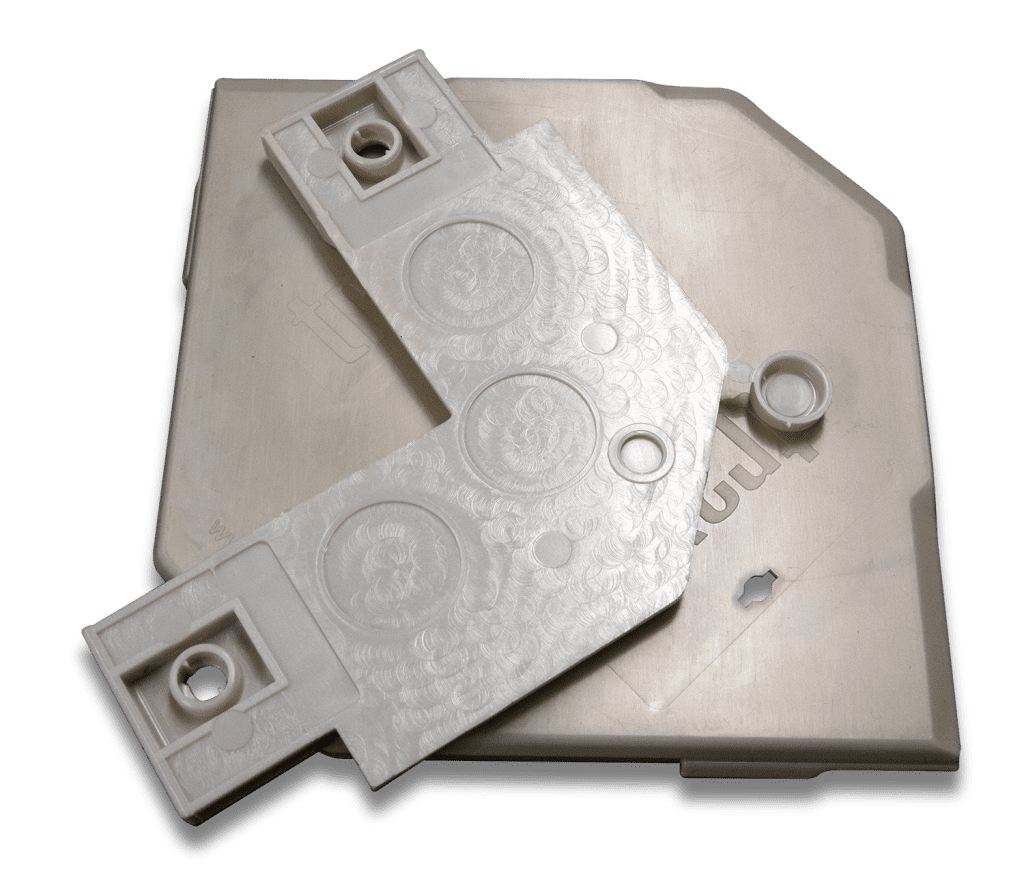Ethylene vinyl acetate

Here at Stephens Plastic Mouldings Injection Moulding we offer Ethylene Vinyl Acetate (EVA) which is a durable, semi-opaque material that can withstand temperatures as low as 65 degrees Celsius.
Ethylene vinyl acetate or EVA is a copolymer of ethylene and vinyl acetate. It is an extremely elastic and tough thermoplastic of excellent clarity and gloss and with little odour. Additionally, it’s low cost, has excellent adhesion to many polar and nonporous substrates, features good flex-crack and puncture resistance, as well as good hot-tack and heat-sealing benefits.
This thermoplastic resin is usually copolymerised with other resins, such as LDPE and LLDPE, or used as part of a multilayer film. EVA is used in blends and copolymers in percentages ranging from 2% to 25%. It improves the clarity and sealability of olefins (LDPE/LLDPE), while a higher percentage of EVA is often used to lower the melting point and increase low-temperature efficiency.
Key Features
- Flexible even at low temperatures
- Resilient
- Tough at low and moderate temperatures
- Crack resistant
- May be processed by conventional thermoplastic techniques or by conventional rubber processing techniques
Chemical Resistance
| Mineral Acids (dilute) | Excellent |
| Mineral Acids (concentrated) | Good |
| Alkali | Excellent |
| Alcohol | Good |
| Ketone | Poor |
| Aromatic Hydrocarbon | Fair |
| Chlorinated Hydrocarbon | Fair |
| Detergents | Fair |
| Oils, Greases | Good |
Colouring
The material’s natural colour varies from colorless to off-white, allowing for a wide colour spectrum. While universal masterbatches can be used, high addition levels are needed. To achieve uniform colour dispersion, polymer-specific masterbatches are favoured.
Applications
Rubber and plasticised PVC are often substituted. Food packaging and surgical materials, as well as traffic signal hoods, ice cube trays, bicycle saddles, barrel bungs, railway sleeper pads, baby bottle teats, and refrigerator door gaskets, are all examples of applications.
EVA vs LDPE
Compared to LDPE, EVA is softer, smoother, and more permeable. Vinyl Acetate levels can range from 4% to 30%, depending on the properties needed; the higher the level, the greater the clarity and versatility. EVA has greater stress cracking resistance, is stronger, and accepts fillers more readily than LDPE. At temperatures as low as -70°C, some grades can maintain their versatility.
We’d Love to Hear From You, Get In Touch With Us!
Please contact us if you would like to receive a quotation and/or to find our more about how we can provide the service you are looking for.




